Nothing adds beauty and value to landscaping like the quality shrubs and trees for sale at Victory Greens. Our field grown material includes a large selection of evergreens and zone hardy deciduous trees. We feature specimen sized plants that will make your landscape look more mature and established. This includes evergreens up to 14 feet and deciduous material ranging from 1 1/2″ to 4″ caliper.
If you need help with your new tree, check out our step by step guide for planting your new tree in the Boise area.
Maple Trees
Pacific Sunset Maple
Acer truncatum x A. platanoides Warrenred Zones 4 to 9 H 30ft x W 25ft Pacific Sunset maple is an excellent medium sized tree that is very tolerant of urban conditions. This hybrid maple combines the best qualities of its parents Acer truncatum and Acer platanoides. It has very glossy dark green leaves that will develop a mixed fall color of yellows, oranges, and reds. This maple tolerates a wide range of soil conditions and would make a good street tree. It is also relatively pest free.
Bowhall Red Maple
Acer rubrum Bowhall Zones 3 to 6 H 40ft x W 15ft The Bowhall Red Maple is considered to be an excellent street, and parking lot tree species as it does not become too wide. During the summer months the leaves are dark green above and grayish beneath. It has better fall color than the red maple cultivar 'Armstrong'.
October Glory Maple
Acer Rubrum October Glory Zones 4 to 9 H 50ft x 40ft October Glory has attractive red flowers appear in early spring before the foliage emerges. Glossy dark green leaves with retain color well into fall. Orange to red fall color for this cultivar is brilliant in most years.
Sensation Maple
Acer negundo 'Sensation' Zone 4 H 30ft x W 25ft Nice shade tree with a rounded crown, covered with green leaves in summer which turn to shades of red in autumn. A great choice for areas with harsh weather and difficult soil conditions.
Sun Valley Maple
Acer Rubrum Sun Valley Zones 4 to 7 H 30ftx W 25ft Easily grown in average, well-drained soil and is tolerant of a wide range of soils, but prefers moist, slightly acid conditions. Very cold hardy and noted for having a symmetrical ovate crown and exceptional red fall color.
Autumn Blaze Maple
Acer x Freemanii jeffersred Zone 3 to 7 Ht 40ft to 50ft x W 25ft to 35ft The Autumn Blaze Maple is a cross between the sliver and red maple trees. It is very vigorous like the silver maple but has a brilliant red color in the fall like the red maple. It is a very fast growing shade tree that tolerates clay soils and it will withstand drought. It is also adaptable to tough climates and outlasts most maple cultivars.
Armstrong Red Maple
Acer rubrum Armstrong Zone 4 Ht 45ft to 50ft x W 12ft to 15ft Acer rubrum Armstrong is a fast growing upright Maple. Its leaves are a rich green in the summer and turn to a reddish burgundy in the fall. It does well in full sun and is an awesome choice for smaller spaces. This tree thrives in wet or moist soils and is tolerant of most soils. It is a great specimen or shade tree.
Deborah Maple
Acer platnoides Deborah Zone 3 to 7 Ht 50ft x W 35ft The Deborah Maple is a medium growing oval-shaped shade tree. It tolerates drought and will grow in a wide range of soil conditions although it does best in well-drained soil. Spring foliage emerges red and fades to a rich green-maroon over the course of a month. The brilliant yellow fall color is one of its attributes that make it a winner.
Birch Trees
Jacquemonti Birch Tree
Betula jacquemontii, or Jacquemontii Birch Tree, is an upright, pyramidal tree typically grown as an ornamental and known for its bright white bark. Height 30ft to 50ft Width 20ft to 35ft
Heritage River Birch Clumps & Singles
Betula nigra Heritage Zone 4 to 9 Ht 45ft x W 20ft to 30ft The Heritage River Birch has a pyramidal to oval canopy with symmetrical branching. Its attractive exfoliating bark remains a beige, or pinkish white, longer than the standard species. The leaves are rich green during the season and turn a brilliant yellow in the fall. It is very adaptable to a range of soil conditions. This tree is a hardy choice that will add definition to any landscape.
River Birch Clumps & Singles
Betula nigra Zone 4 to 9 Ht 50ft x W 25ft to 40ft The River Birch has a pyramidal to oval canopy with symmetrical branching. The foliage is rich green during the summer and turns a brilliant yellow in the fall. This is a hardy, medium to fast growing shade tree that is adaptable to most soil conditions. It is tolerant of abundant moisture or dry hot summers. The cinnamon-colored exfoliating bark is what makes this tree a spectacular choice any time of the year.
Honey Locust Trees
Shademaster Honeylocust
Gleditsia triacanthos inermis Shademaster Thornless Honeylocust Zone 5 to 8 Ht 40ft to 55ft x W 20ft to 35ft The Shademaster Honeylocust is one of the best cultivars of the thornless honeylocust. It has an upright, vase-form canopy with small green foliage in the summer that turns bright yellow in the fall. It is widely adaptable to many soil conditions and it is drought tolerant. This thornless shade tree is a hardy specimen for any landscape
Sunburst Honeylocust
Gleditsia triacanthos inermis Sunburst Thornless Honeylocust Zone 3 to 8 Ht 30ft to 50ft x W 20ft to 35ft The Sunburst Honeylocust is a golden colored specimen with a rounded semi-weeping canopy. It has bright yellow spring foliage, making it a colorful accent tree. The foliage then turns to a light green and provides filtered shade allowing lawn and other plants to grow beneath it. The leaves turn back to gold in the fall. It is adaptable to many soil conditions and is drought tolerant. This hardy specimen will add unparalleled color to your landscape
Skyline Honeylocust
Gleditsia triacanthos inermis Skyline Thornless Honeylocust Zone 4 to 8 Ht 45ft to 55ft x W 20ft to 30ft The Skyline Honeylocust is an awesome lawn tree with open branching. Because of its lacy tropical foliage, it allows the sun to filter through to the grass beneath the canopy. This tree is very drought tolerant. Like most honeylocust, it adapts well to compacted soil and less than favorable conditions. This is a tree that requires very little maintenance.
Ash Trees
Cardinal Royal Mountain Ash
Sorbus aucuparia 'Cardinal Royal' Zones 3 to 6 H 35ft x W 20ft The Cardinal Royal Mountain Ash is a vigorous tree with upright branches and a very symmetrical and tidy habit. This tree was selected for its clusters of small brilliant red berries, much more spectacular than the orange of the species. Dark green foliage is silvery beneath.
Summit Green Ash
Fraxinus pennsylvanica Summit' Zones 4 to 9 H 45ft x W 25ft It is a vigorous, pyramidal tree that produces a strong central leader. Foliage turns yellow in fall, with the quality of the fall color often varying considerably from year to year. Ash-gray to gray-brown bark develops distinctive diamond-shaped ridging on mature trees.
Cimmaron Ash
Fraxinus pennsylvanica Zones 3 to 7 H 60ft x W 30ft The Cimmaron Ash is a seedless sturdy tree for an urban or rural environment. Fall colors are a brilliant warm red, and the growth rate is relatively fast, so this tree will be able to cast shade on a properties hot spot in no time. This tree is tolerant of most soils, and prefers a location that gets lots of sun.
Patmore Ash
Fraxinus pennsylvanica Patmore Zone 3 to 8 Ht 40ft to 50ft x W 25ft to 35ft The Patmore Ash has an oval to rounded canopy and is a cultivar of the green ash. Its small glossy dark green leaves turn bright yellow in the fall. The tree adapts to compacted soils and will tolerate poor drainage. It is a versatile specimen and has been successfully grown in many urban areas. It is a moderate to fast growing shade tree.
Autumn Purple Ash
Fraxinus americana Junginger Zone 4 to 6 Ht 40ft to 50ft x W 30ft to 45ft The Autumn Purple Ash is an oval shaped tree with glossy green leaves in the summer. It has been a proven winner for its long-lasting crimson-purple and yellow fall color. It does well in most soils and will adapt to a wide range of moisture conditions. It is a fast growing tree and makes a fantastic shade tree. It also grows well along city streets.
Linden Trees
Greenspire Linden
Tillia cordata Redmond Zone 4 - 7 Ht 35ft to 50ft x W 25ft to 30ft The Greenspire Linden has an oval to teardrop shaped canopy with leathery, rich dark green leaves. It produces pale yellow flowers that have a wonderful jasmine fragrance. It likes well-drained soils but will adapt to many moisture and soil conditions. In the fall the leaves turn an impressive yellow color. This linden has a very symmetrical branching and has become one of the most popular trees for public parks.
Redmond Linden
Tillia cordata Redmond Zone 4 - 8 Ht 40ft to 55ft x W 20ft to 30ft The Redmond Linden has the largest leaves of the Tillia cultivars. It has a dense oval to pyramidal shaped canopy. The leaves are a glossy green and turn a bright yellow in the fall. It is widely adaptable to many soil types and thrives in well-drained soil. In the summer this tree produces clusters of very fragrant, light yellow blooms that attract bees. This is a majestic specimen tree that will make a statement in your landscape.
Other Trees
Northern Red Oak
Quercus rubra Zone 3 to 8 Ht 55ft x W 45ft The Northern Red Oak is one of the fastest growing oak shade trees. The branches spread out to form a full rounded canopy. Its dark green leaves during the season change to deep reds and yellows in the fall. This tree will adapt to most soil types and is hardy to harsh climate conditions. The acorns that are produced will attract squirrels from around the neighborhood. This shade tree is a long-lived specimen that will provide shade and enjoyment for years to come.
Quaking Aspen Singles & Clumps
Populus tremuloides Zone 2 to 4 Ht 40ft x W 15ft to 25ft Quaking Aspen are found in almost every state. They are fast-growing trees although they are short lived unless they are planted in higher altitudes. With their striking silvery-gray bark and their rounded foliage that shimmers in the wind, they are a favorite in many landscapes. The brilliant yellow fall color has made the Aspen one of the most popular trees for landscaping.
Sweet Gum
Liquidambar styraciflua Worplesdon Zone 4 to 8 Ht 65ft x W 32ft The Sweet Gum Worplesdon has an upright oval canopy with green star-shaped leaves during the summer. It is hardy to our climate and will grow vigorously once established. It is best known for its fiery autumn color early in the fall. The leaves display brilliant shades of orange, red and yellow and hold their color longer than most deciduous trees.
Flowering Plum Trees
Thundercloud Plum
Prunus cerasifera Thundercloud Zone 5 to 7 Ht 20ft x W 15ft to 20ft The Thundercloud Flowering Plum develops a dense rounded canopy. It is characterized by deep purple to burgundy colored foliage with numerous porcelain-pink flowers in the spring. It is adaptable to most soils. It is less likely to bear fleshy fruit than some prunus varieties. The small fruit it produces will draw birds and wildlife to your yard. This colorful specimen tree will stand out in your landscape.
Newport Plum
Prunus cerasifera Newport Zone 4 to 8 Ht 20ft x W 15ft to 20ft The Newport Flowering Plum develops a dense rounded canopy. The foliage is a deep purple-red to bronze color, with pale pink flowers in the spring. It's small fruit after flowering attracts birds and wildlife to your yard. This hardy specimen is highly adaptable to harsher climates. It is an excellent choice for its summer color and will stand out in your landscape.
Flowering Crabapple Tree
Radiant Crabapple
The Radiant Crabapple tree produces crimson buds that open to single, striking pink flowers that will light up your landscape. Height 20ft to 30ft Width 15ft to 20ft
Spring Snow Crabapple
Malus x Spring Snow Crabapple Zone 3 to 8 Ht 25ft x W 15ft The Spring Snow Flowering Crab is one of the only fruitless flowering trees. It has an oval-shaped upright canopy with attractive green leaves. The fragrant, white flowers cloak the tree in mid spring. This tree is very adaptable to varied soils and climates; it can grow in nearly all conditions. This versatile specimen has a place in almost any landscape plan.
Brandywine Crabapple
Malus Brandywine Zone 4 to 8 Ht 15ft to 20ft x W 15ft to 20ft The Brandywine Flowering Crabapple is a small rounded ornamental tree with dark green leaves. It produces red buds that evolve into fragrant double pink blossoms. It prefers well-drained soil but is very adaptable. The highly ornamental fruit are cherry size and bright yellow in color. The fall foliage is colorful and includes shade of green, orange, red and yellow. This tree is well suited to courtyards and small spaces.
Flowering Pear Trees
Aristocrat Pear
Pyrus callerana Aristocrat Zones 5 to 9 H 35ft x 25ft The Aristocrats narrow-oval, glossy dark green leaves have distinctively wavy margins. Leaves dance in the breeze due to long petioles. Creamy white flowers in dense corymbs appear in profusion in early spring. Leaves turn attractive reddish-purple to bronze-red in fall.
Cleveland Pear
Pyrus calleryana Cleveland Zone 4 - 8 Ht 20ft to 30ft x W 15ft to 20ft The Cleveland Flowering Pear trees have upright oval shaped canopies. They have glossy heart-shaped, rich green leaves that turn a deep red in the fall. They have white blossoms in the spring. They are tolerant of drought and thrive in almost all soils. The small non-edible fruit become a valuable food source for the birds in the winter. These colorful flowering pear trees are excellent for your landscape.
Redspire Pear
Pyrus calleryana Chanticleer Zone 4 - 8 Ht 40ft to 45ft x W 15ft to 25ft The Redspire Flowering Pear has an upright-oval canopy. The leaves emerge a red-purple color and later turn a glossy green with a hint of red. It adapts well to most soils and is a hardy to harsh climates. Its blossoms are larger than the Aristocrat pear and its fruit is a reddish pea sized fruit that attracts the birds. The awesome fall color is a yellow-orange color. It makes a spectacular midsized shade tree.
Capital Pear
Pyrus calleryana Capital Zone 5 - 9 Ht 25ft to 35ft x W 8ft to 12ft The Capital Flowering Pear has an upright, columnar shape. It has glossy, dark green leaves with plentiful white flowers during the spring. It adapts well to most soils and is hardy to harsh climates. It has pea-sized fruits that attract small birds. Its fall colors include reds, purples and oranges. It makes a spectacular boulevard tree or specimen tree for a compact area.
Other Flowering Trees
Kwanzan Cherry
Prunus Kwanzan Zone 4 to 8 Ht 35ft x W 20ft to 30ft The Kwanzan Flowering Cherry has a vase-shaped canopy. The leaves emerge bronze in the spring. It has showy, double pink flowers that resemble roses. The leaves turn to a dark green during the summer. This tree thrives in most soil types. Its reddish thin glossy bark sets it apart from other flowering trees. When fall arrives, the leaves turn a reddish bronze making the specimen an enchanting focal point.
Canada Red Chokecherry Singles & Multi-stems
Prunus virginiana Canada Red Zone 2 Ht 25ft x W 20ft The Canada Red Chokecherry has a rounded canopy that is usually selected for its small fragrant white flowers in long clusters. It is a fast growing tree that is very hardy and does well in most soil conditions. The first emerging green leaves in the spring, mature to a bright reddish-purple. The leaves turn red hues in the fall. Besides the unique color it is an excellent choice for attracting birds to your landscape.
Washington Hawthorne
Crataegus phaenopyum Zone 3 to 8 Ht 20ft to 25ft x W 15ft to 20ft The Washington Hawthorne is a densely branched ornamental tree that has a rounded canopy. It has white flowers in the spring. The foliage emerges as a reddish color, but quickly turns to a dark green, then in the fall turns to a burgundy color. This tree prefers well-drained soil but will adapt to compacted or poor soils. The red-orange fruit clusters are highly ornamental and cling onto the branches after the leaves have fallen. They become a good food source for the birds during the winter months.
Evergreens
Layered Spruce
Picea pungens Zone 6 to 8 Ht 50ft x W 12ft to 17ft Our Layered Spruce have been hand selected out of thousands of Colorado Blue Spruce for their individual characteristics. They were grown in a very unique environment that causes the Picea pungens liners to grow more columnar and often times much more open. We have selected both green and blue cultivars from our fields that meet the standards we consider to be deemed, Layered Spruce. Over the past 20 years we have played an active roll in bringing the unique Layered Spruce to the Treasure Valley.
Colorado Blue Spruce
Picea pungens Zone 2 to 7 Ht 50ft to 60ft x W 15ft to 20ft The Colorado Blue Spruce has long been one of the most desirable to be used as Christmas trees. It grows native to parts of the Rocky Mountain States but thrives in the western United States. The pyramid-shaped spruce is drought tolerant once established. It also prefers full sun and thrives in well-drained soils but will adapt to partial sun and many soil conditions. There are many color variations in the spruce because of these factors. You can find both blue and green spruce in our selection.
Norway Spruce
Picea abies Zone 3 to 7 Ht 40ft x W 15ft to 20ft The Norway Spruce is a medium-growing conifer that develops a pyramidal Christmas tree shape. It is a dark green and has a shorter needle than most spruce. It does well in a variety of soils and will tolerate many climates. This hardy evergreen is used for windbreak applications because of its dense structure. It is perhaps the most popular ornamental spruce, rivaled only by the Colorado Blue spruce.
Serbian Spruce
Picea omorika Zone 4 to 6 Ht 45ft x W 12ft to 17ft The Serbian Spruce is a medium growing conifer that has dark glossy foliage. The underside of the foliage has a whitish tinge that gives the tree a unique appearance from a distance. It has a pyramidal form and has been used in the past for Christmas trees. It prefers well-drained soil but needs to keep moist. It is a deer resistant tree so it is chosen for use in mountain landscapes.
Austrian Pine
Pinus nigra Zone 4 to 8 Ht 30ft to 50ft x W 20ft to 30ft The Austrian Pine is a large, well-branched, fast growing conifer with rich green needles. The thick horizontal spreading branches makes it an outstanding specimen tree. It is very hardy because it will adapt to compacted soils with poor drainage. It is drought tolerant and is successfully used in many screening applications.
Vanderwolf Pine
Pinus flexilis Vanderwolf's Pyramid Zone 4 to 7 Ht 20ft x W 10ft to 15ft The Vanderwolf Pine is a distinctive pyramidal shaped pine with blue-green needles. It is a soft-needled pine with uniform branching and is resistant to insects and disease. Because of its fibrous root system, it does require a well-drained soil. Even though a smaller Pinus cultivar, it makes a subtle but dynamic statement when used as an accent tree.
Scotch Pine
Pinus sylvestris Zone 3 Ht 15ft to 25ft x W 25ft to 45ft The Scotch Pine is a medium to large conifer that develops an oval shaped canopy. It has a moderate growing habit and is has 1 ½ to 2 ½ inch long needles. It will not tolerate overly wet soil so it does require a well-drained site. The orange-brown peeling bark makes it an interesting evergreen for definition when used in urban landscapes.
Giant Weeping Sequoia
Sequoiadendron giganteum pendulum Zone 6 to 8 Ht 20ft x W 2ft to 4ft The Giant Weeping Sequoia is a columnar tree that is a stupendous in stature. It is often called the Dr. Seuss Tree. It makes a majestic display in any landscaping with its weeping side branches. No two of these specimens grow alike. It prefers a lower pH soil, hopefully below 7.5 (neutral), but will acclimate if properly cared for. It will personalize your yard and may become the focal point of your landscape.
Blue Atlas Cedar
Cedrus A. Glauca Zone 6 to 8 Ht 40ft to 60ft x W20ft to 35ft The Blue Atlas Cedar is a stately and erect evergreen with lace-type open growth. It has silver-blue needles and a pyramidal crown. It does the best in full sun. It is know as a water-wise tree, once it's established and will only need watering occasionally. It is a medium growth tree but can be pruned to fit in variety of landscapes. It develops small open upright cones later in the year. This interesting cedar is a beautiful landscape tree.
Weeping Alaska Cedar
Chamaecyparis nootkatensis Pendula Zone 4 to 7 Ht 30ft x W 7ft to 10ft The Weeping Alaska Cedar is a rather narrow evergreen that supports long draping branches. It has been called the friendly ghost tree, and has an eloquent grace that will soften any landscape. The emerald green foliage accentuates the graceful arms that slightly droop and give it personality. This conifer prefers a moist, well-drained soil but will adapt to a number of soil conditions. It is a hardy choice for a focal point or just to accent your yard.
Golden Deodar Cedar
Cedrus deodar Aurea Zone 5 Ht 25ft to 35ft x W15ft The Golden Deodar Cedar is a pyramidal form evergreen with pendulous branches. It has golden-green needles and grows in full sun to part shade. It grows good in well-drained soils but will thrive in a somewhat dry area. Once established, it only needs watered occasionally. This beautiful focal point specimen will be the dominant feature in your landscape.
Skyrocket Juniper
Juniperus scopulorum Skyrocket Zone 4 to 9 Ht 15ft to 20ft x W 2ft to 5ft The Skyrocket Juniper is a columnar evergreen that is a blue-green in color. It is a hardy conifer for screening applications in many landscapes. Because of its size, this tree fits into difficult places such as between houses or narrow side yards. It will need regular watering when it is first planted but will eventually adapt to just occasional watering. It makes a durable and versatile living screen or garden accent tree.
Emerald Green Arborvitae
Thuja occidentalis Smaragd Zone 4 to 8 Ht 15ft x W 3ft to 4ft The Emerald Green Arborvitae is one of the most popular evergreens for screening. It has deep green foliage. It stays compact and columnar throughout the year. It does not like shade and cannot withstand over-watering. It does need to keep moist until it develops its roots in its new location. Once established, arborvitaes will grow 6in to 9in a year. When used like a hedge, they can be spaced to provide a living wall.
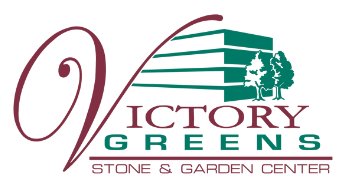
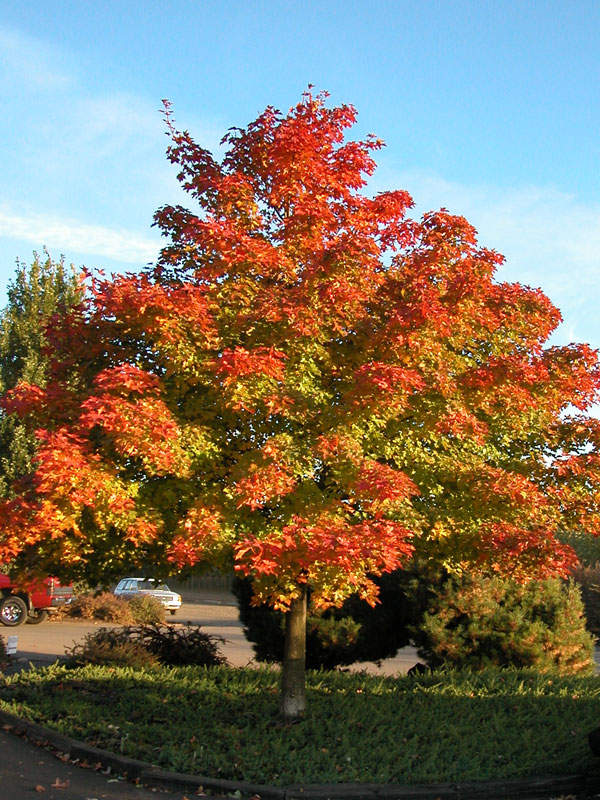
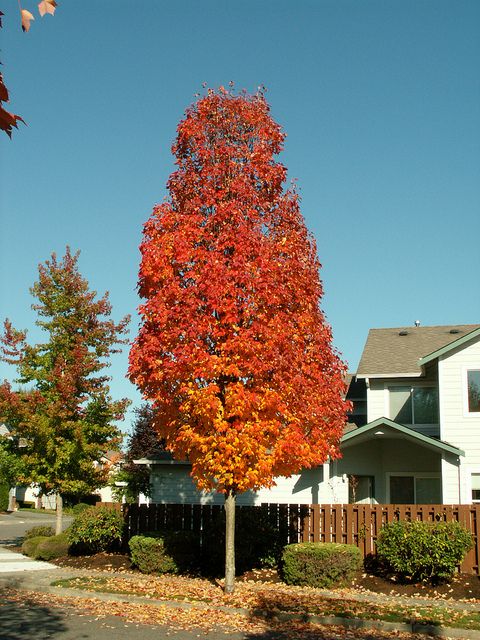
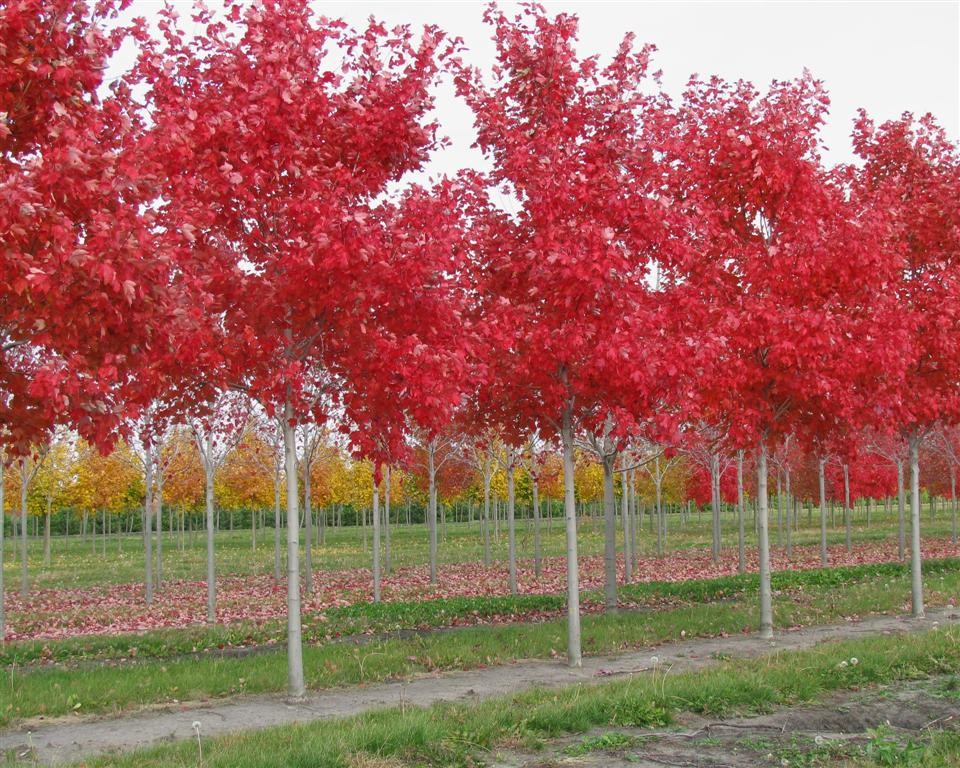
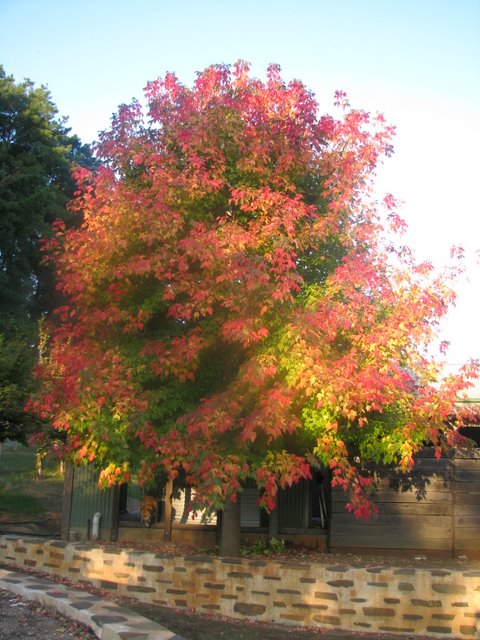
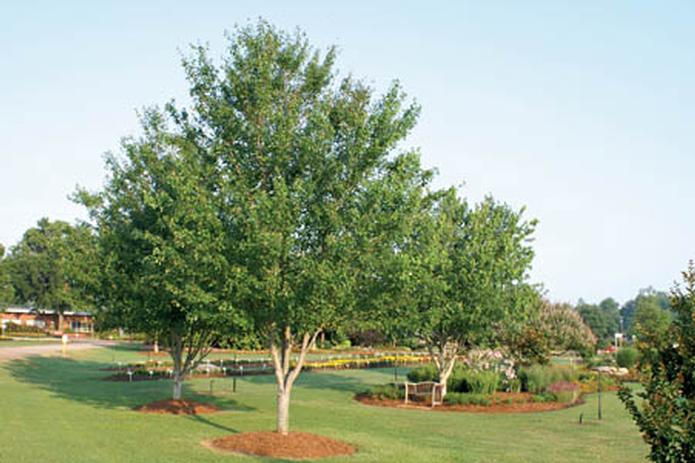
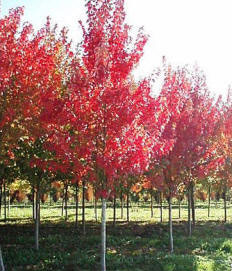
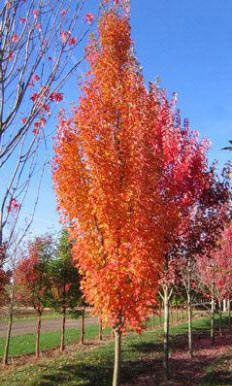
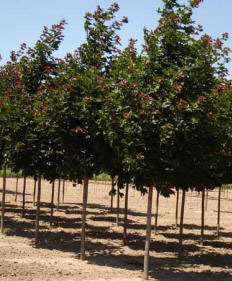
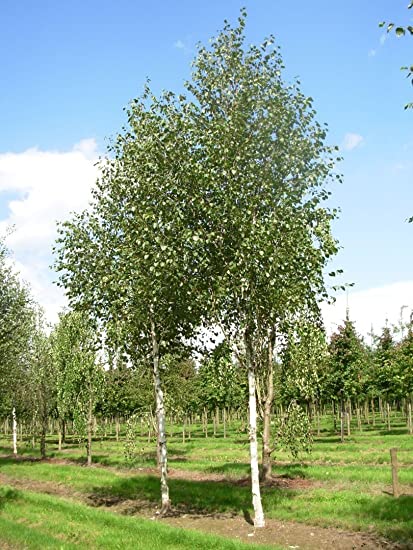
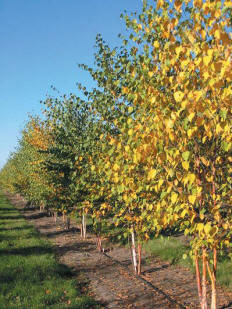
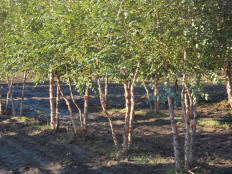
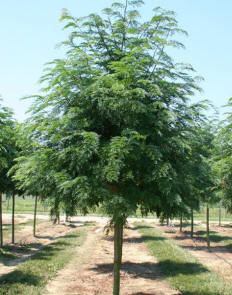
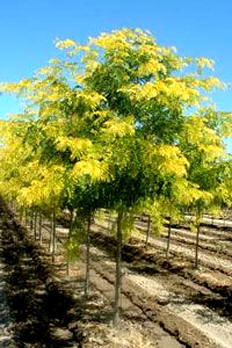
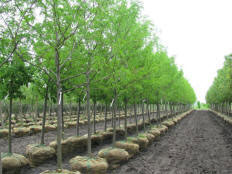
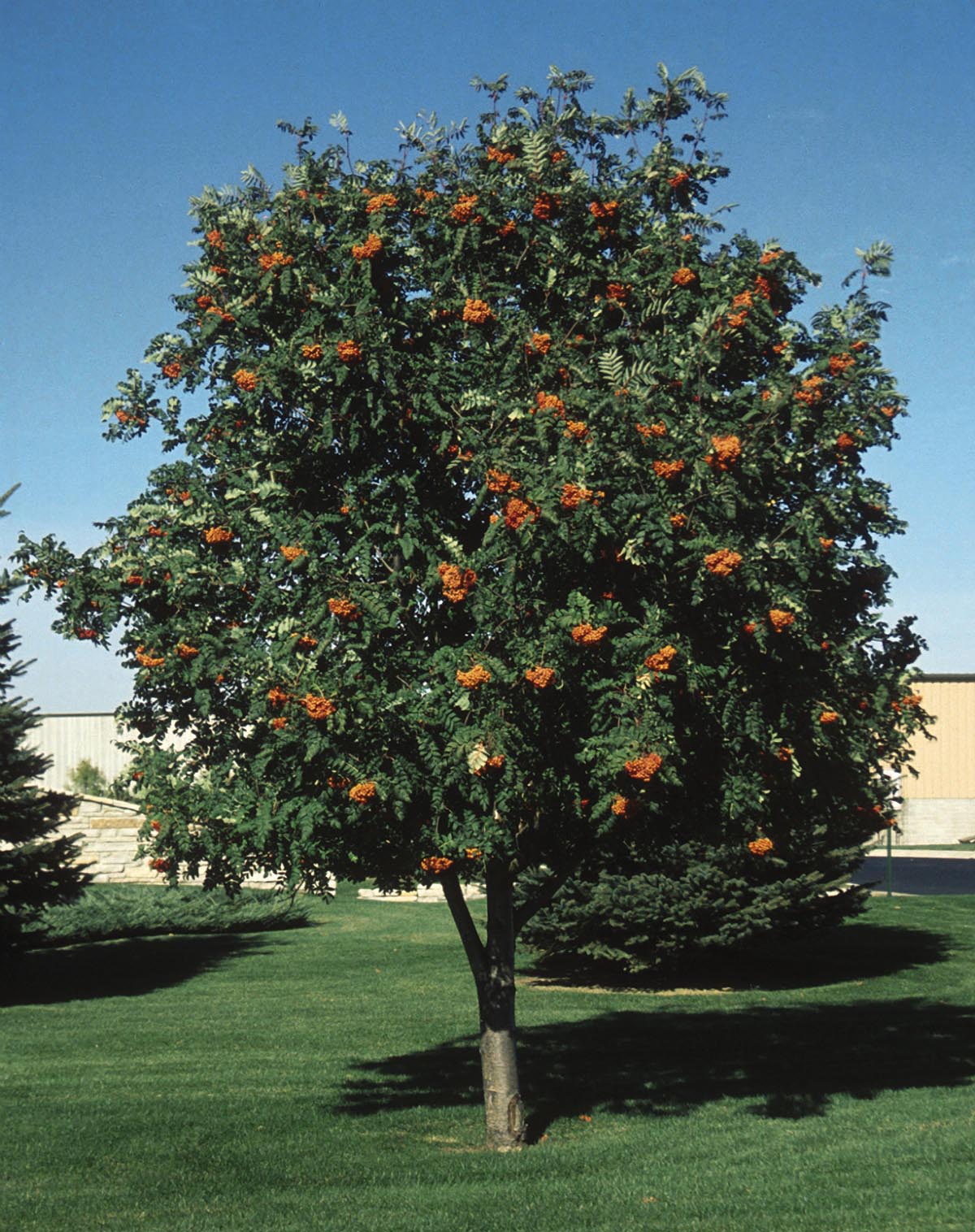
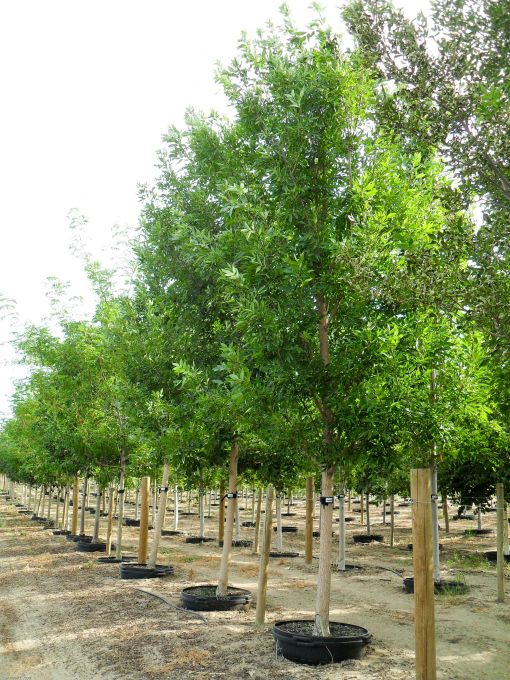
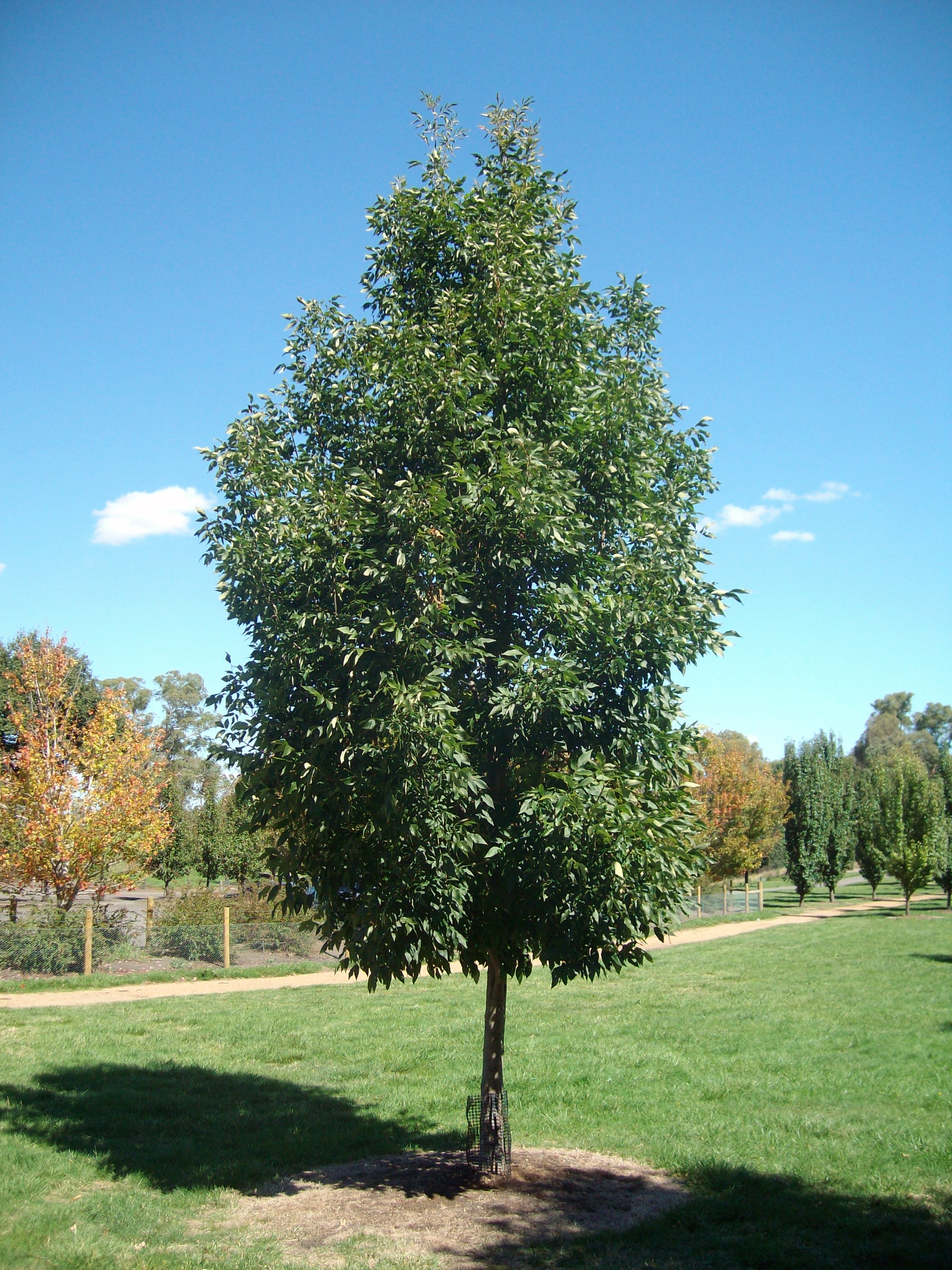
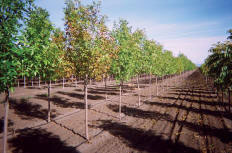
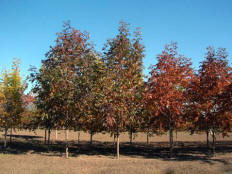
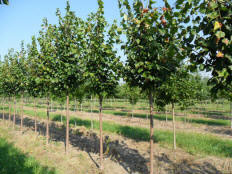
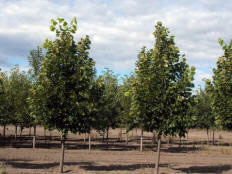
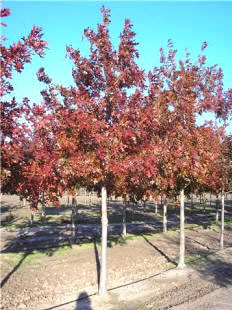
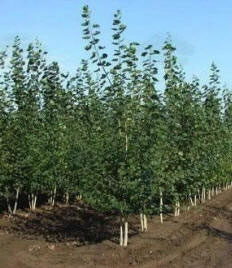
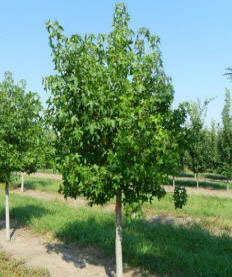
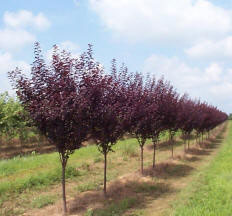
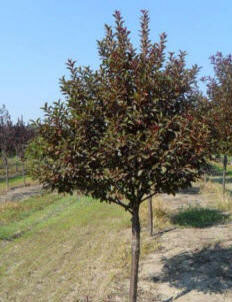
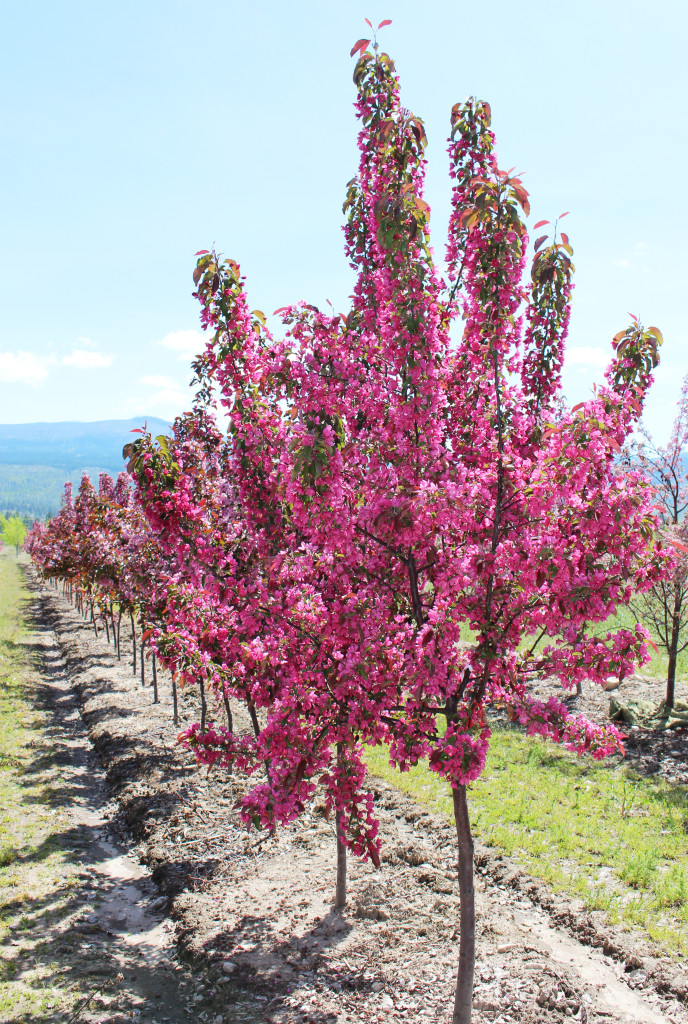
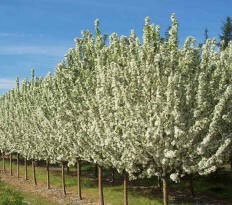
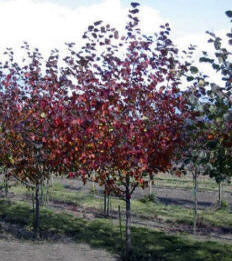
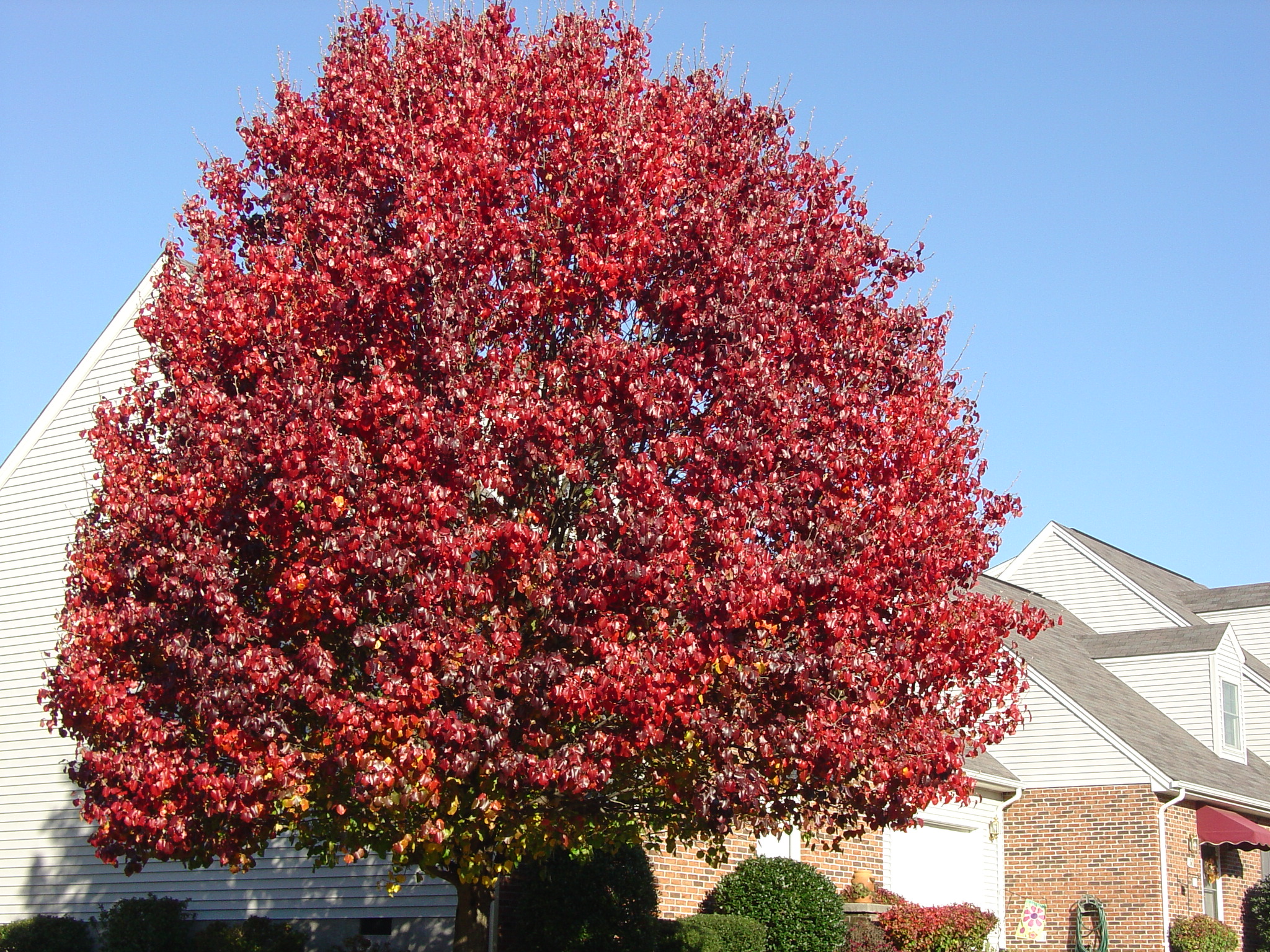
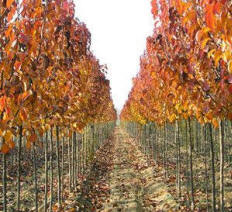
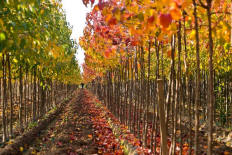
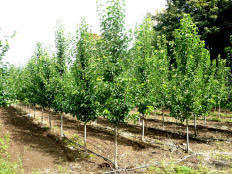
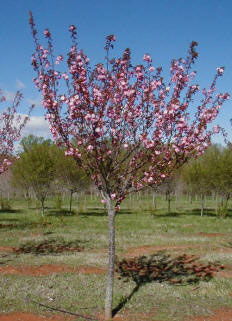
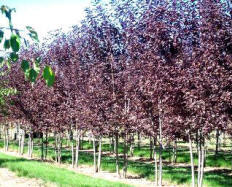
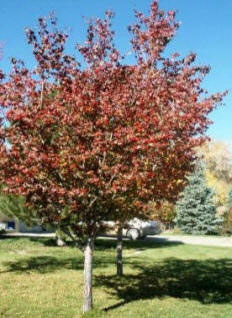
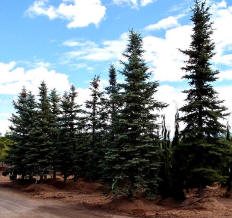
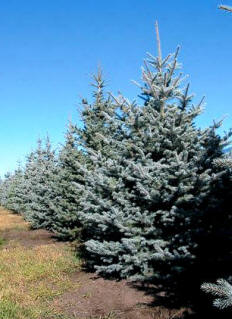
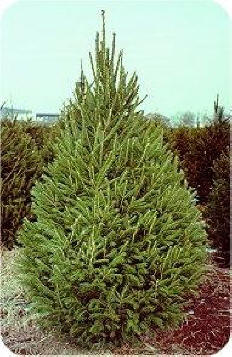
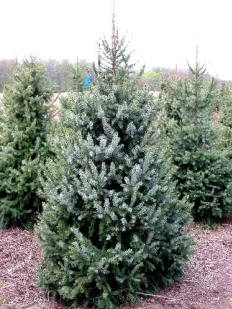
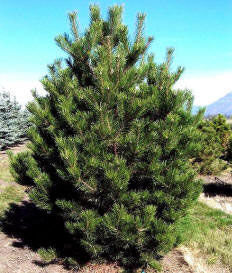
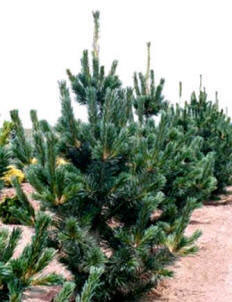
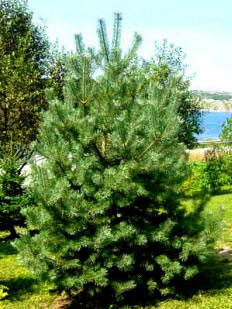

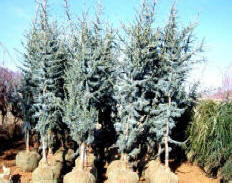
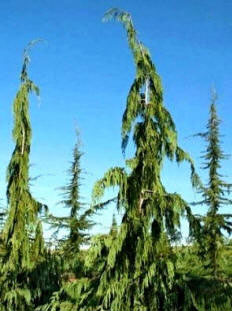
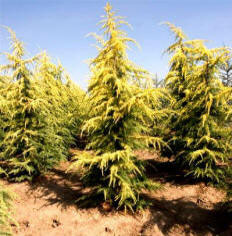
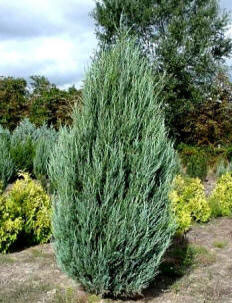
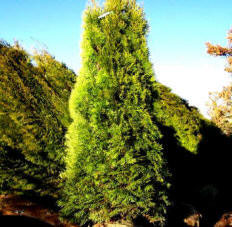
Comment on “Trees For Sale Boise”